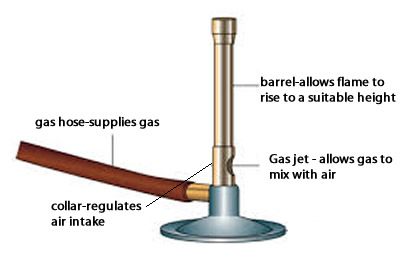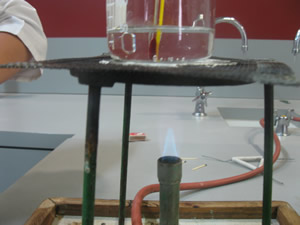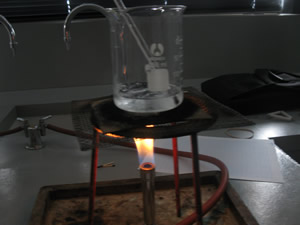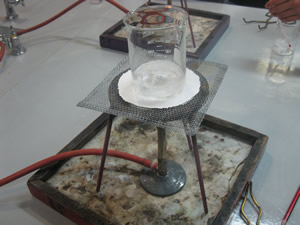
The most common piece of laboratory equipment is the Bunsen burner. It operates on gas and its flame is adjusted by managing the mixture of gas and air. A Bunsen burner is named after the inventor Robert Bunsen, a scientist working for the University of Heidelberg, in 1855.
Three types of flames are obvious when adjusting the air and gas mixture. The yellow flame, commonly known as the safety flame, is the coolest flame at almost 300 degrees. The blue flame, can reach temperatures of approximately 500 oC and is almost invisible in a bright room. The next type of flame is characterised by a bright blue triangle in the centre of the flame and can reach temperatures of around 700oC. This flame makes a noise and is commonly known as the roaring blue flame.
1) Why is the yellow flame known as the safety flame?
2) How is the flame adjusted on a Bunsen burner?
3) Which is the hottest flame?
4) When attempting to heat an item at high temperature, which part of the flame should the item be brought closest to?
5) The Bunsen burner must always be sitting on a


